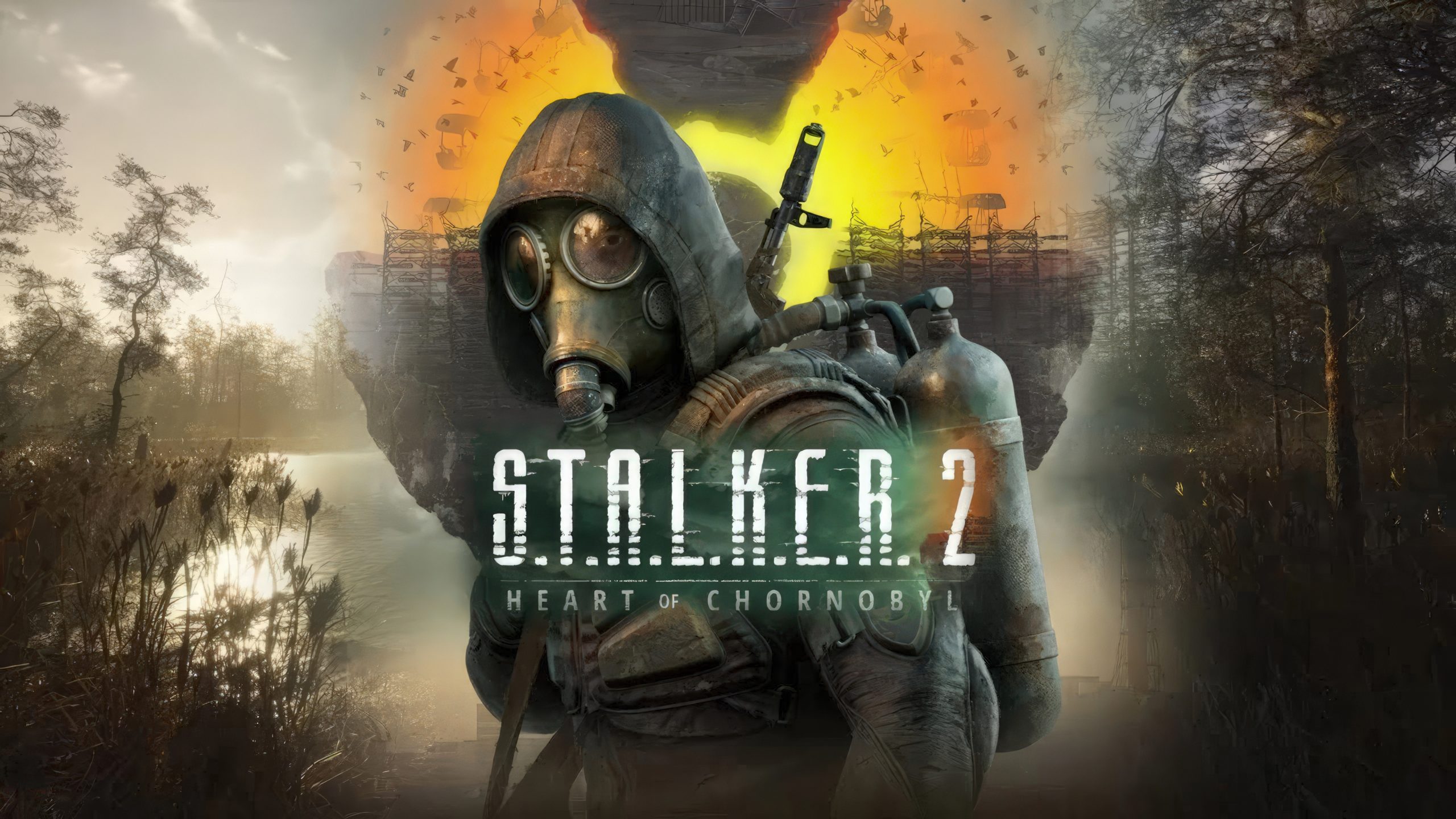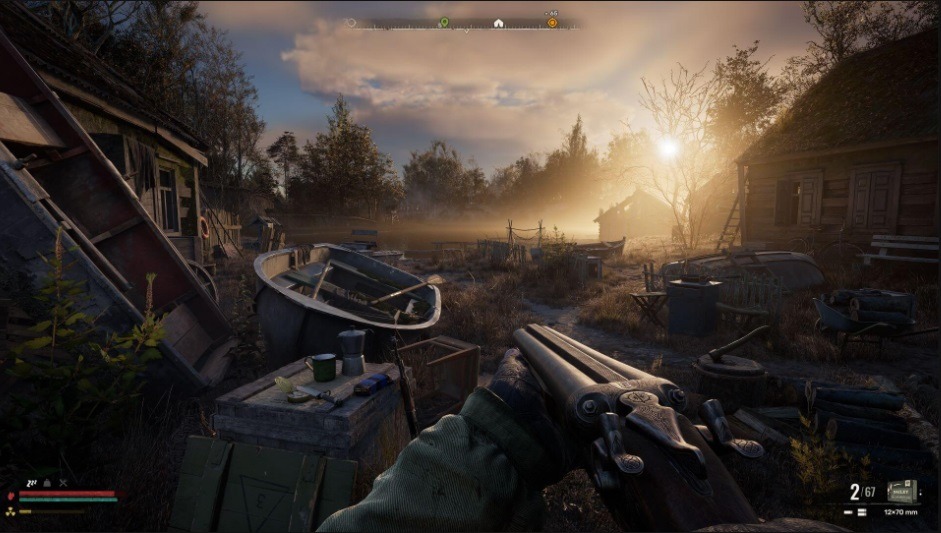The Test
When discussing the video game Arlequin, one name that immediately comes to mind is STALKER 2. Announced nearly 15 years ago, this project has been challenging, complex, and even chaotic, particularly towards the end of its production, as the developers at GSC Game World had to face the invasion of their country by the Russian army two years ago. While we would all be inclined to consider this extraordinary situation without attributing blame to the studio, it is solely the quality of the game that will be judged in this review, and nothing else. Unfortunately, it must be stated plainly that STALKER 2 is not the anticipated major success; rather, it falls short of expectations. The game is riddled with bugs, experiences significant graphical downgrades, has clunky AI, and suffers from sluggish gunplay, leading to considerable disappointment for players.
I hope you are in a good mood because there is a possibility that you may feel quite depressed after taking this test. The imposed setting of the title, which occurs shortly after the events of the first STALKER in 2006, contributes to a grim atmosphere. Additionally, the game’s survival open-world mechanics are noticeably outdated, featuring a raw, stark, and uncompromising approach. If you are familiar with the first episode and its various extensions, you will find yourself on familiar ground, perhaps even too much so. However, if you are new to the series, be aware that STALKER 2 is far from a conventional FPS where one enjoys shooting with ease. Here, depression prevails. Embodying a somewhat dispirited soldier, navigating through an intentionally hostile and austere environment, undertaking uninspiring missions, facing punitive and often unjust difficulty, STALKER 2 makes no concessions. One might almost say that the studio GSC Game World wants players worldwide to perceive the harshness of their daily lives; however, it is important to remember that this oppressive atmosphere was already present in the first STALKER back in 2007.
A BUG’S LIFE
Before examining the survivalist-oriented universe and gameplay of the game, it is important to address its technology, which falls short of expectations, particularly for a release scheduled for 2024. Based on the trailers and promotional videos released by Microsoft over the past few years, one might have anticipated a benchmark-setting title in line with the most visually stunning productions created using Unreal Engine 5. However, this is not the case, and the transition from GSC Game World’s in-house engine to Epic Games’ Unreal Engine has clearly been unsuccessful. This graphical downgrade was noted during gamescom in August 2023 when mixed previews emerged. Consequently, at the start of January 2024, developers announced an additional eight-month delay due to negative reviews and worldwide test sessions with players. Despite this extra year, GSC Game World has not managed to release a satisfactory game; our test session was plagued by numerous technical issues such as visual bugs, audio glitches, textures exploding, ragdoll errors, scripts failing to launch, freezes, crashes, and controller recognition problems. Efforts to mitigate these issues with two updates totaling nearly 150GB (with one update alone being 130GB) were insufficient, leaving STALKER 2 riddled with bugs. An embargo was placed on the release day due to the studio’s awareness of these problems. While some colleagues prefer waiting for bug fixes before rating the game, considering GSC Game World’s current geopolitical situation, this stance is understandable. Nevertheless, even if all technical issues are resolved, STALKER 2 will still fall short in its core aspects…
THIS IS MY ZONE, MY GUY!
The first thing to note is that we are once again thrust into the Zone without any explanation, equipped only with our willy and a knife (pardon the expression). For newcomers, the Zone refers to the area sealed off by the military following the two explosions at the Chernobyl power plant. This continuation from the events of STALKER: Shadow of Chernobyl is typical for a sequel. However, do not expect significant narrative connections with the original game; here you take on the role of Skif, a soldier about to be deployed into this hostile, barren landscape where various non-player characters will task you with traversing the vast open world through repetitive missions. Those who played the first STALKER will easily recognize similarities in the map design despite the 17-year gap between releases. Logically, this makes sense, but it could have been more surprising given the time elapsed.In terms of gameplay mechanics, players are tasked with scanning for artifacts, gathering funds, and performing actions such as rescuing or threatening a soldier, among other primary and secondary quests that will take approximately 30 to 40 hours to complete. The approach here is conventional; however, in STALKER 2 (and similarly in the original), players rely solely on their legs for movement between locations. There are no vehicles available, nor any real fast travel options except by paying a substantial fee to guides. This design choice aims to immerse players in the harsh reality of navigating an unforgiving environment, underscoring that traversing open worlds is far from effortless.It becomes evident why completing the game takes 30 to 40 hours as each journey between points can take tens of minutes due to these limitations.
Between the gloomy weather and the pervasive atmosphere of misery that permeates like a dirty death, combined with the dilapidated Soviet concrete buildings, it is enough to evoke feelings of despair every few meters. This sentiment is even more pronounced in STALKER 2, a game that focuses on inventory management, resource allocation, and weapon maintenance over shooting sensations. Here, players must monitor their weapons’ condition, repair or discard them as needed to lighten the load, since accumulating loot makes movement increasingly cumbersome. Additionally, health and stamina require constant attention; one must inject products to regain life, treat wounds to stop bleeding, consume food like sausilsac and bread to stave off hunger, and drink Red Bull to enhance mobility—essentially, survival in STALKER 2 is a genuine experience for some, an absolute challenge for others. The game incorporates a role-playing element that aligns with its survivalist setting, which fans of the series appreciate. However, this approach underscores that STALKER 2 makes no compromises and has no intention of appealing to a broader audience. We understand and respect this commitment, but it may also deter certain players.
STALKER 2, a highly anticipated sequel to the 2007 game STALKER, was released after a 15-year development period marked by significant geopolitical challenges for its developer, GSC Game World. Despite high expectations for a groundbreaking experience in the genre, STALKER 2 falls short due to numerous technical issues, including bugs, graphical downgrades, and AI problems. The game retains the oppressive atmosphere of its predecessor, placing players in a post-apocalyptic Zone following the Chernobyl disaster. Players control a soldier navigating an expansive, unforgiving open world, completing missions that emphasize survival and resource management over traditional first-person shooter mechanics. The game’s focus on detailed inventory and weapon maintenance creates an authentic survival experience but may prove tedious for some players. STALKER 2 ultimately fails to meet expectations due primarily to persistent technical shortcomings that hinder overall enjoyment.
From our perspective, we are willing to embrace the survivalist proposal presented in STALKER 2, but the open world environment does not particularly captivate us, especially with vast expanses of barren nature stretching out in every direction where little activity occurs. Certainly, players will encounter abhorrent creatures, groups of soldiers patrolling specific areas, and uncover hidden locations such as underground networks inhabited by other supernatural beings that will exacerbate survival challenges. However, there is a lack of genuine excitement, leading to a feeling of repetition over time. Fortunately, weather events add an element of unpredictability, introducing atmospheric changes: the emission. This is an intense explosion caused by the nuclear power plant which dramatically alters the environment. The sky turns blood red as a warning for players to seek shelter in buildings, caves, or underground networks. If players are caught outside during this event, they will face powerful winds contaminated with hazardous substances.
Anomalies must now be considered, which are supernatural occurrences that act as obstacles for our soldier and represent the primary threat of the Zone, one that should never be underestimated. These include decomposing bubbles, mini-tornadoes, incandescent fires, pools of acid, and flying landmines; constant vigilance and maximum use of bolts are essential to avoid instant annihilation. Fortunately, there is a device for detecting these dangers, but as the story progresses, these hazards increase in number. Soon it becomes evident that these anomalies can also serve as traps against enemies. Luring enemy soldiers or stray dogs into these hazardous areas is an effective way to dispose of them. Additionally, conflicts between factions and creatures can be provoked to conserve ammunition and avoid running out again. In any case, playing STALKER 2 means accepting multiple deaths. Those who complain about Souls-like games offering no quarter will find the same challenge here; it’s not your typical first-person shooter (FPS).
NOT STUPID, BUT NOT INTELLIGENT EITHER
Once again, players find themselves thrust into the Zone without much explanation or context, armed only with their wits and a knife (pardon the expression). For newcomers, the Zone refers to the area sealed off by the military following the two explosions at Chernobyl. It is typical for a sequel’s narrative to build upon events from its predecessor, STALKER. However, there are no direct narrative connections here; instead, players take on the role of Skif, a soldier who must navigate this desolate and hostile environment where numerous non-player characters (NPCs) will assign him mundane missions across an expansive yet uninspiring open world. Fans familiar with the first STALKER will recognize many similarities in the map design. While this approach makes sense theoretically, after 17 years since the release of the original game, one might have hoped for more innovative surprises.
The user’s text appears to be a review or critique of the video game “STALKER 2.” The reviewer discusses various aspects of the game, including its survival elements, open world, and combat mechanics. They mention that while the game emphasizes survival and resource management, it lacks engaging content in its open world and has poor AI performance. The reviewer also notes the game’s challenging difficulty, comparing it to “Souls-like” games, and mentions the introduction of weather events and anomalies that can be strategically utilized against enemies. Overall, the review presents a mixed opinion of the game, acknowledging its unique survival aspects but criticizing its execution in certain areas.
Have any thoughts?
Share your reaction or leave a quick response — we’d love to hear what you think!



